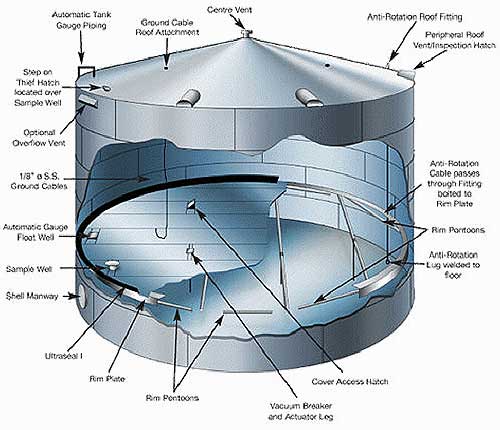How Many Storage Tank type Do You Know?
According to the material, storage tanks can be divided into metal tank and nonmetallic tank. Steel container for storing liquid or gas is called steel storage tank. Steel storage tank is indispensable and important equipment for petroleum, chemical, grain and oil, food, firefighting, transportation, metallurgy, national defense and other industries. Our economic life can’t be separated from various of storage tanks, the important role of storage tank plays in the development of national economy is irreplaceable.
Types of storage tanks can be divided in accordance with the position, shape, and structure of storage tank.
- According to the position: aboveground storage tank, underground storage tank.
- According to the oil type: crude oil storage tank, diesel tank, fuel oil tank, lubricating oil tank, edible oil tank, fire water tank, etc.
- According to the application: industrial storage tank, commercial storage tank.
- According to the shape: vertical storage tank, horizontal storage tank.
- According to the structure: fixed roof tank, floating roof tank, spherical tank.
- According to the capacity: tank with capacity more than 100m³ are large storage tanks, most of which are vertical storage tanks; the others are small storage tank, mostly are horizontal storage tank.
Aboveground storage tank
Refer to the tank bottom is located in the design elevation and above, the bottom of the tank below the design elevation but not more than the height of the tank 1/2 also known as the ground tank.
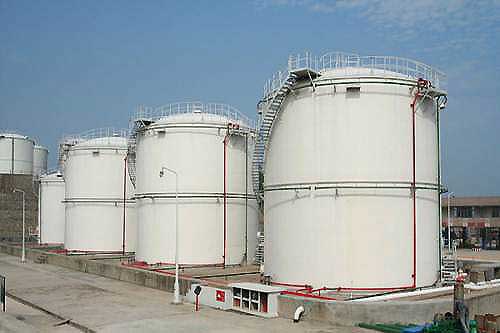
Underground storage tank
Underground tank refers to the storage tank whose liquid level is below 0.2m of the tank design elevation.
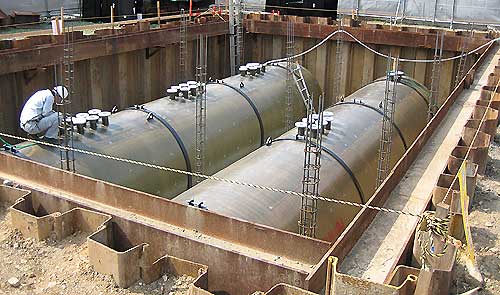
Vertical storage tank
Generally, small scale storage tank adopts horizontal tank, large storage tank adopts vertical storage tank. Liquid level in most of vertical storage tank are higher, in many cases, the static pressure of liquid column can not be neglected. Compared with horizontal storage tank, vertical storage tank covers smaller areas, but it also needs to take into account the wind load and static pressure in the design process.
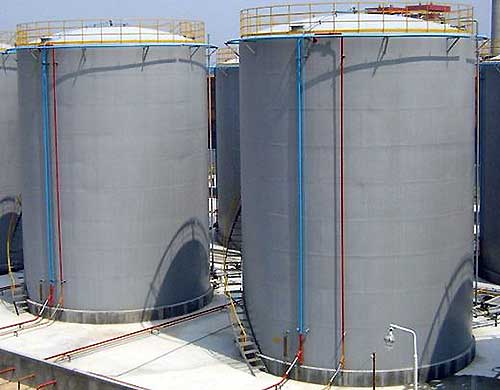
Horizontal storage tank
Capacity of horizontal storage tank is generally less than 100m³, usually used in the production process or gas station.
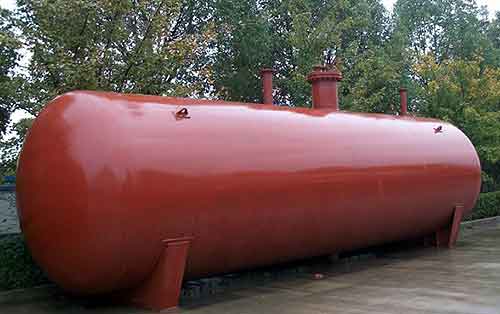
Fixed roof storage tank
It refers to the storage tank for storing liquid with high flash points (eg. fuel oil, water, diesel, kerosene, bitumen, etc.) Fixed roof tank can also be divided into cone roof storage tank, dome roof storage tank and umbrella roof storage tank. All of these roofs are insulated in order to prevent the clogging of some materials, wherein the heat is provided steam coils in within the storage tank.
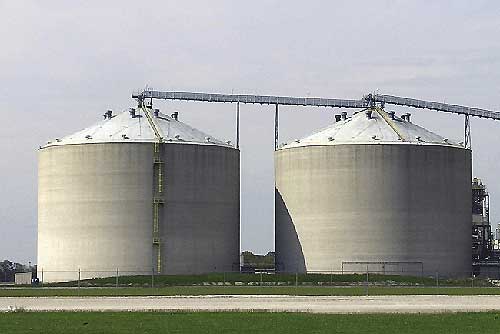
Dome roof storage tank
Dome roof tank is a kind of steel container with a spherical roof and a cylinder tank body. Dome roof storage tank has the advantages of simple manufacturing and low cost, thus it is widely used in various of fields. The common capacity is 1,000-10,000m³, the maximum manufacture ability of TICO for dome roof storage tank can up to 30,000m³.

Floating roof tank
Floating roof tank can be divided into external floating roof tank (usually called floating roof tank) and internal floating roof tank.
External floating roof tank
The floating roof of floating roof storage tank is a floating cover on the surface of the stored liquid, floating up and down with the input and output of the liquid. There is an annular space between the floating roof and the tank wall, the annular space has a sealing device, so that the liquid in the storage tank can be isolated from the atmosphere when the top roof is floating up and down, thereby greatly reducing the evaporation loss of the stored liquid in the storage process. When the floating roof tank is used to store oil, it can reduce the loss of oil by about 80%, compared with the fixed roof tank.
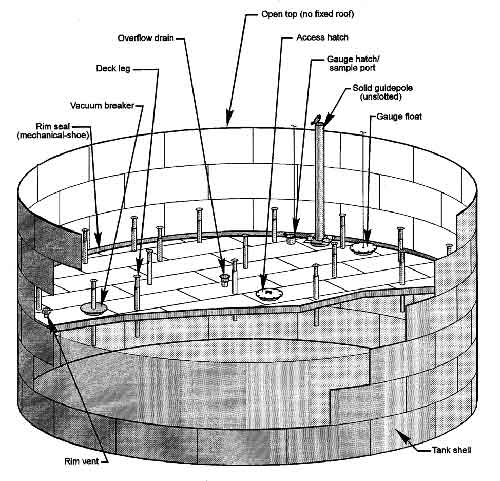
Internal floating roof tank
The internal floating roof tank is a floating roof tank with a fixed tank roof, is a new type of storage tank which is combined the dome storage tank with the floating roof storage tank. The top of internal floating roof tank is the combination of dome roof and floating roof, the exterior is floating roof, and the interior is fixed roof. Internal floating roof tank has the unique advantages, on the one hand, compared with external floating roof tank, internal floating roof tank can prevent the wind, sand, rain, snow and dust from invading, guarantee the quality of stored liquid absolutely. What’s more, the internal floating roof floats upon the liquid making the liquid has no vapor space, reducing evaporation loss 85%-96%, reducing the risk of air pollution, fire and explosion, it can easily ensure the quality of stored liquid, especially is suitable for the storage of high-grade gasoline, jet fuel and toxic petrochemical products. As there is no gas space on the liquid level, the corrosion of the tank wall and tank roof is reduced, thereby prolonging the service life of the storage tank. On the other hand, under the same seal condition, compared with external floating roof tank, internal floating roof tank can further reduce the evaporation loss. The internal floating roof tank also has disadvantages: compared with dome roof tank, internal floating roof tank consumes more steel plates, and the construction requirements are higher. Compared with external floating roof tank, the maintenance is inconvenience, it is a sealed structure, and the tank is not easy to be large scale, at present, capacity of internal floating roof tank is generally not more than 10,000m³.
